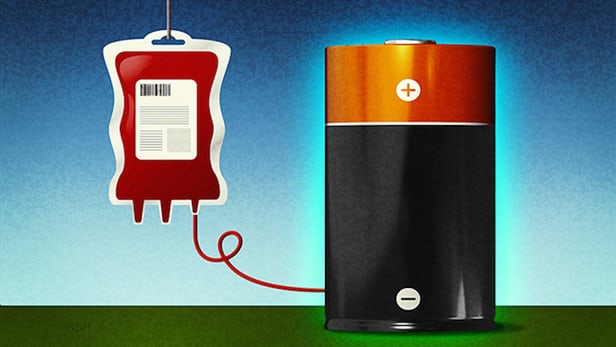Scientists continue to overcome obstacles holding back the longer-lasting lithium-oxygen batteries, which may cause standard lithium-ion batteries to be on the way out. The primary issue behind lithium-oxygen batteries is the build-up of lithium peroxide, which reduces the electrodes’ effectiveness, causing a lack in efficiency.

But now, a team at Yale tested a molecule they discovered in blood that not only improves the lithium-oxygen function but also helps reduce biowaste. The batteries have the potential to hold a charge for much longer than traditional lithium-ion batteries, as well as the ability to extend the life of devices such as smartphones to several weeks before they require a recharge. Before lithium-oxygen batteries can be widely implemented, the issues surrounding efficiency and lithium peroxide build-up need to be solved.
Prior studies have tried to reduce lithium peroxide by keeping oxygen in the cell as a solid and by modifying the electrode to produce superoxide instead. Using this, the Yale researchers looked for a new catalyst that lets lithium oxide in the cell decompose back into lithium ions and gaseous oxygen. They found the answer in a very unexpected place: animal blood.
The blood transports oxygen around the body thanks to a protein called hemoglobin. The heme molecule makes up a portion of that protein and researchers found when used in the battery, it dissolves into the electrolytes. This helped reduce the amount of energy needed for the battery to charge and discharge.
Heme is often a disposed of waste product, so the new application for the molecule could also help reduce the environmental impact of other industries.
“We're using a biomolecule that traditionally is just wasted,” said Andre Taylor, one of the study's authors. “In the animal products industry, they have to figure out some way to dispose of the blood. Here, we can take the heme molecules from these waste products and use it for renewable energy storage.”
The comprehensive research can be found here.
Source: New Atlas
Advertisement
Learn more about Electronic Products Magazine





